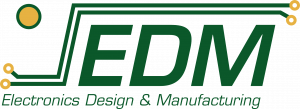cEDM – Electronics Design & Manufacturing
About Electronics Design & Manufacturing
Imec’s Center for Electronics Design & Manufacturing is a center of expertise that unites, informs and supports companies active in design, manufacturing and integration of electronics.
Our mission is to support the development of high quality, reliable and cost-effective electronic modules (PBA) by means of knowledge creation and sharing, scientifically sound methodologies and collaboration throughout the electronic supply chain.
Within the cEDM community companies from all over the electronic supply chain can meet to discuss the challenges of electronics design and manufacturing in an open non-commercial environment and have access to a broad set of design and manufacturing guidelines and tools.
The cEDM partners – of which Eurocircuits is a highly valued member – support the development of these guidelines and tools and ensure their industrial applicability and validity.
Imec is the world-leading R&D and innovation hub in nanoelectronics and digital technologies
1. Design-for-Manufacturing
Basic good Design-for-eXcellence practice: EDM-D-000 and much more on this topic freely accessible for cEDM members. How to join cEDM: https://www.cedm.be/membership/cedm-membership-partnership.
2. Printed Circuit Board Design and Manufacturing
What lead-free PCB finish is the best? Obviously, it is Nickel-Gold … or not? For one thing, it may lead to electronics that is more susceptible to brittle joint fracture.
Don’t simply order FR4 if your board is to be lead-free soldered. Why the FR4 materials used in the SnPb era delaminate when you solder them lead-free:
Ah… thermal reliefs! Those assembly guys demand it but what do they know about my signal integrity! The impact of thermal reliefs on electrical impedance explained:
3. Printed Board Assembly
Ever heard of “Head-in-Pillow”? No? Then you are lucky, since this is something that gives board assemblers a headache. More on this BGA assembly problem that may slip-through production testing and end up at the end customer in
We are a bit more expensive, but our quality is much better! Do you recognize this? It may be true but how convincing is it? It is clear what the additional product cost is but how do you convincingly quantify the “better quality” of the Printed Board Assembly? An answer:
https://www.cedm.be/system/files/public/library/presentations/2013-05-30_E-A-Beurs.pdf
If we can quantify our better quality we can build a strong argumentation to design and produce electronics close to the European customer even if our cost is somewhat higher. How do we obtain a competitive local electronics design and manufacturing industry?
https://www.cedm.be/system/files/public/library/presentations/2017-06-01_E-A-Beurs.pdf
https://www.cedm.be/activities/events/cedm-event-2015
https://www.cedm.be/system/files/public/library/presentations/2012-10-25_KMO-Kennisbeurs.pdf
4. Electronics Reliability
Many things can fail in electronic modules. An overview of failure mechanisms.
https://www.cedm.be/system/files/public/library/presentations/2017-06-28_IPC-Reliability-Forum.pdf
If so many things can fail, how do we deal with this complexity and how can we obtain a reliable electronic module?
LED’s last long! Many have experienced that LED-based lighting and display products last far shorter than the claimed tens of thousands of hours. Why this is, is explained in https://www.cedm.be/system/files/public/library/presentations/2015-12-02_LED-Event.pdf.
More in-depth insight in LED solder joint reliability:
https://www.cedm.be/system/files/public/library/publications/2015-04_EuroSimE_Publication.pdf
From time to time material modifications are introduced by electronic component suppliers. A recent modification has been the introduction of low thermal expansion – usually referred to as “Green” – mold compounds for IC-packages (BGA, QFN, etc). Such changes may create a serious reliability risk for the solder joints and the internal wire bonding. An explanation.
https://www.cedm.be/system/files/public/library/presentations/2013-01-30_iNEMI-Webinar.pdf
https://www.cedm.be/system/files/public/library/presentations/2014-05_ESA-Workshop.pdf
https://www.cedm.be/system/files/public/library/publications/2016-04_ICEP-2016_Publication.pdf
https://www.cedm.be/system/files/public/library/publications/2014-05-20_ESA-Workshop-Publication.pdf
More information on the risk of wire bond failure in
https://www.cedm.be/system/files/public/library/publications/2012-09_ESTC_Cu-Wire-Fatigue.pdf
Thermal cycling testing for solder joint reliability takes many months. A faster method that also decouples temperature from mechanical load is a bending test. https://www.cedm.be/system/files/public/library/publications/2016-04_EuroSimE_Publication.pdf
5. Restriction on Hazardous Substances
On the first of July 2006 the Restriction on Hazardous Substances became effective. It has had a major impact on the electronics industry. Its scope is still further expanding towards new product types such as medical devices while additional substances get banned like certain plasticisers. Nevertheless, there is still electronics such as that used in railway and avionics that remains out of the RoHS scope but may require conversion to lead-free soldering because of component supply. More info on RoHS and conversion to lead-free soldering:
https://www.cedm.be/system/files/public/library/presentations/2012-04-23_Agoria-Workshop.pdf
https://www.cedm.be/system/files/public/library/presentations/2010-09-28_Het-Instrument-2010.pdf
https://www.cedm.be/system/files/public/library/presentations/2007-11-08_IMAPS-Autumn-Event-2007.pdf
https://www.cedm.be/system/files/public/library/presentations/2006-03-21_Techwatch-2006.pdf
A RoHS brochure
https://www.cedm.be/system/files/public/library/publications/Brochure_RoHSService_EN.pdf
More RoHS info
6. Material Identification in Electronics
Electronics uses a very wide range of materials some of high value such as gold. Does it contain hazardous substances? How much material value is there in my assembly? How can we create a Full Material Declaration for the PBA? How do we know what is used where and how much?
More about valuable and critical materials in electronics and electronics recycling:

